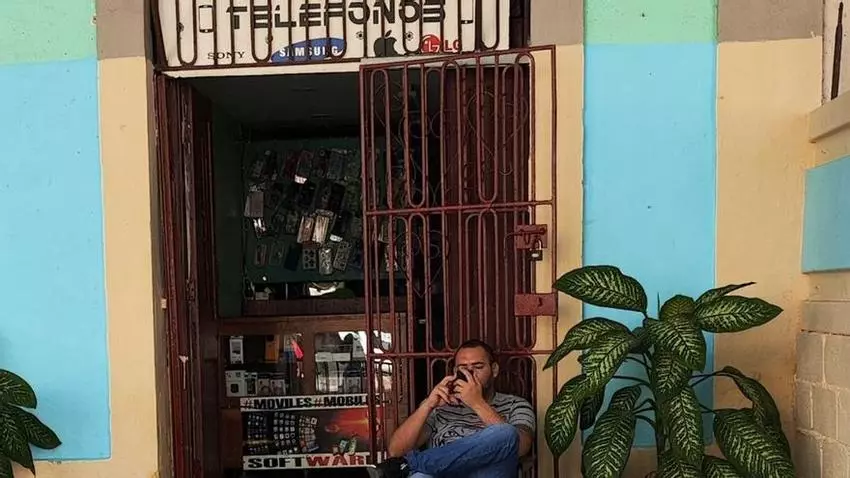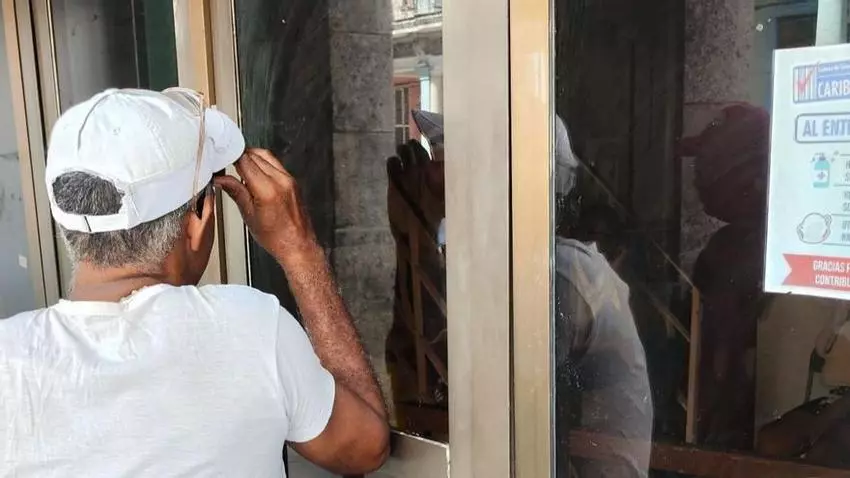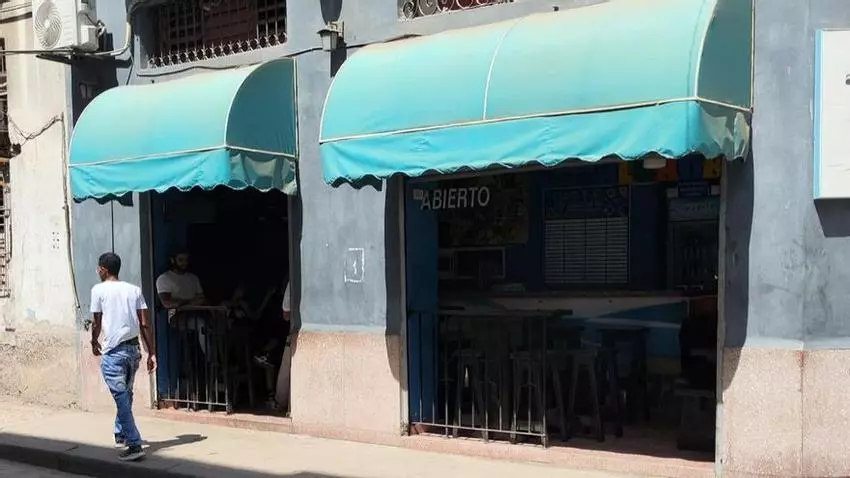
![]() 14ymedio, Natalia López Moya, Havana, 7 March 2024 — Without much notice or publication of the schedule, long blackouts have returned to Havana. The Cuban capital, which for weeks had the privilege of electricity while the provinces sank into power outages of more than ten hours a day, has not managed to avoid the crisis caused by fuel shortages and the deterioration of the Island’s thermoelectric plants.
14ymedio, Natalia López Moya, Havana, 7 March 2024 — Without much notice or publication of the schedule, long blackouts have returned to Havana. The Cuban capital, which for weeks had the privilege of electricity while the provinces sank into power outages of more than ten hours a day, has not managed to avoid the crisis caused by fuel shortages and the deterioration of the Island’s thermoelectric plants.
This Thursday, last summer’s events were repeated in the most populous city in the country. Outside a private store on Carlos III Avenue in Central Havana, a bored employee waited in the dark, trying to avoid the heat. Behind him, the name of Las Columnas (The Columns) was displayed on a counter, along with cell phone cases, charging cables, devices to measure the number of steps that are taken each day and some bluetooth speakers.
All the products for sale in the small business require a connection to electricity, at least to be charged. An electricity that the people of Havana are beginning to lack, even in neighborhoods that in previous years were “forgiven” from power cuts due to the presence of several hospital centers or an underground electricity system, so obsolete that the authorities themselves fear turning it off.

“I walked near the Hermanos Ameijeiras hospital; the whole area was in the dark, and you couldn’t hear the power plant that sounds like a dragon; when it’s on you can hear it for several blocks,” a retiree told this newspaper. She was frustrated when trying to get her pension out of an ATM on nearby Belascoaín Street; it was out of service due to lack of power.
The famous La Cubana hardware store, on the corner of Reina and Lealdad streets, popularly known as Feíto and Cabezón, was also closed to the public due to the blackout. Despite selling its products in freely convertible currency (MLC), a modality designed for those who have income in foreign exchange, the premises lacks a generator that would allow it to continue operating in these circumstances.
The customers who arrived looked through the entrance windows with frustrated expressions, trying to spot the merchandise they had come to buy or if any employee deigned to approach and give an explanation about the time of the possible reopening. “It’s the same old song. If the blackout continues after two in the afternoon, they will probably not attend to anyone else,” said a man who moved there from Cojímar in Habana del Este. “They told me that there was a piece here that I need for the sink but it has been a total frustration.”

In La Algarabía, a private cafeteria on Neptuno and Escobar streets, also in Central Havana, silence was the tone of the morning. There were no customers at the tables, in the dark despite the strong sun outside, and the workers sat near the entrance, waiting for the electricity to return. “Without light there is no profit; without light nothing happens,” said one of them.
A map of part of the city, with zone 1 surrounded by red, became popular this Thursday in several WhatsApp groups. The image warned about the neighborhoods that were without electricity, a mapping of the blackout which the eyes of the residents of Havana must get used to again so they can plan their lives accordingly.
This Thursday, the same thing was experienced during the six-hour blackout by the residents of La Timba, one of the poorest neighborhoods in the Plaza de la Revolución municipality, despite its proximity to the Council of State. The well-to-do residents of Kohly Avenue in Nuevo Vedado were also affected. The tall buildings near Tulipán Street and Boyeros Avenue, built in the years of the Soviet subsidy, was the worst hit due to the paralysis of the elevators, indispensable to access the higher floors.

“To top it off yesterday, no water arrived, so today we’re in a blackout and without water. We don’t know if, when the electricity returns, the cistern will have been able to fill up or not,” complains a resident of the 18-storey building located on Factor Street, near Conill, known as “the pilots’ building” by the professional sector that benefited from its apartments in the 1980s.
On social networks, residents of other provinces barely hid their joy because the Cuban capital finally has joined them in the energy crisis. “Ah, in Havana the power is also going out,” said a netizen on the Facebook page of the unpopular Electric Union of Cuba, which predicted a deficit of 1,210 megawatts for this Thursday. But beyond the regional rivalries, the signal sent by the Havama blackouts was “bad for everyone,” summarized another commentator.
“If there are now blackouts in Havana, what awaits the rest of Cuba is total darkness,” a woman predicted.
Translated by Regina Anavy
____________
COLLABORATE WITH OUR WORK: The 14ymedio team is committed to practicing serious journalism that reflects Cuba’s reality in all its depth. Thank you for joining us on this long journey. We invite you to continue supporting us by becoming a member of 14ymedio now. Together we can continue transforming journalism in Cuba.
